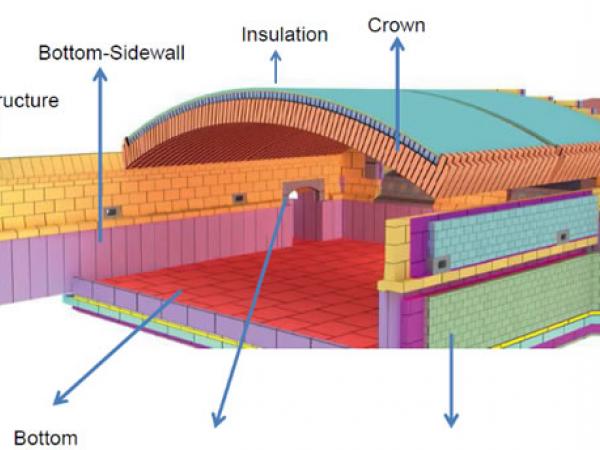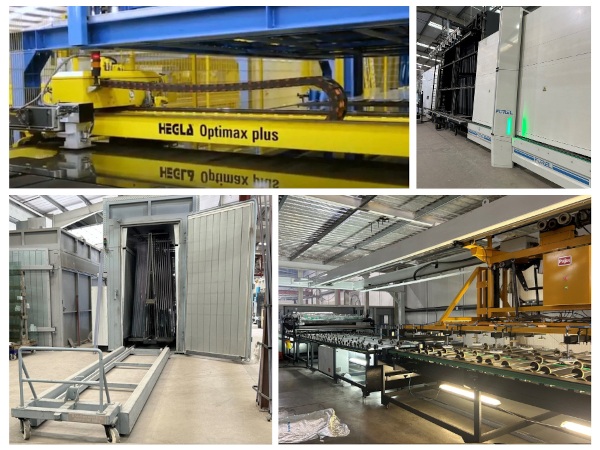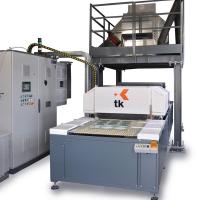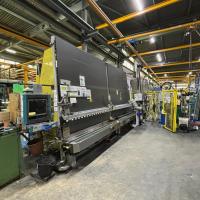
Date: 22 February 2016
The temperatures change from 1200℃ to 1600℃ during the whole process when the qualified glass is finished producing from material melting, and the glass liquid is in the convection state. So different parts of glass furnace need different refractory bricks.
A. sidewall brick: sidewall is mainly adopted fused cast AZS block, and recently years fused cast α-β alumina is used in sidewall.
B. tank bottom brick: The condition of the bottom brick is that the glass liquid temperature is low and the flow is weak. The tank bottom is now using the multi-layer compound bottom structure, usually the ground tiles use 300mm clay brick, then 25mm zircon sand or fused zirconia corundum ramming material are adopted above the clay bricks, the paving bricks adopt 75mm fused cast AZS block.
C. doghouse brick: doghouse is usually serious damaged as it is influenced by the erosion of powder and glass liquid, wear of material layer, and flame. Especially the corner of doghouse, so the corner brick generally adopts fused cast AZS block 41#. Except for the corner bricks, other parts can use PX casting fused cast AZS block 33#.
D. neck brick: the corner of neck adopts WS fused cast AZS block 41# which can strengthen the ability to resist erosion. The short neck crown and the neck part adopt high quality silica bricks.
E. cooling section: the temperature of glass liquid is lower than melting section, so the erosion is relatively lower, so fused cast AZS block 33# can be used in this part.
F. channel brick: usually adopt fused cast AZS block 33# or fused cast alumina block α-Al2O3.
G. regenerator chamber: top crown of regenerator usually adopts fused cast AZS block, direct bonded magnesia brick or silica brick. The top layers of side wall and partition wall use magnesia brick, middle layers use magnesia brick or low porosity clay brick, and bottom layers adopt low porosity clay brick.
Article source: http://fusedcastazs.com/news/64.html
 600450
600450


















Add new comment